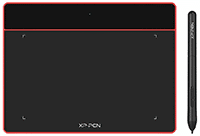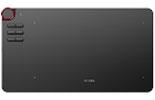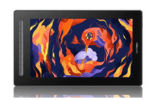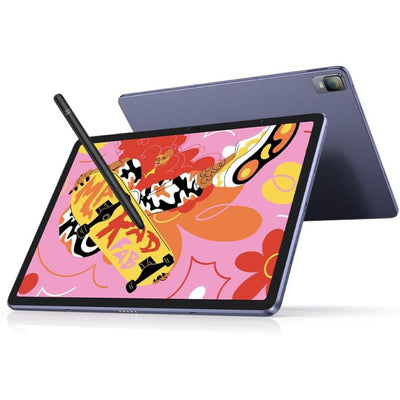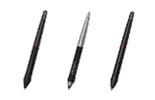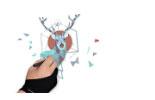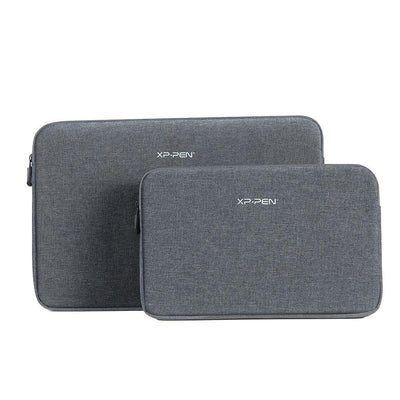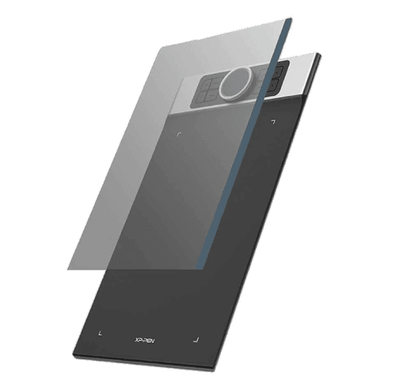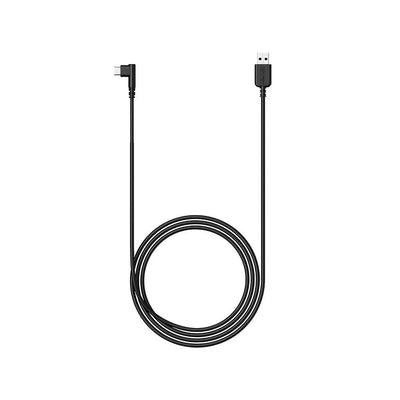Understanding Perspective Drawing : An Easy Step-by-Step Tutorial

Perspective drawing is a fundamental skill for artists, allowing them to create realistic and three-dimensional representations of objects and scenes.
Whether you're a beginner or an experienced artist looking to improve your drawing abilities, this tutorial will guide you through the process of understanding and mastering perspective drawing.
By following these step-by-step instructions, you'll be able to create captivating and realistic artwork that truly captures the depth and dimension of the subject matter.
The Basics of Perspective Drawing
Perspective drawing is a fundamental technique used by artists to create the illusion of depth and space on a two-dimensional surface.
By employing mathematical principles and observing how objects appear in relation to each other in real-life scenarios, artists can accurately portray the way objects would look when viewed from different angles.
When we look at the world around us, we perceive depth because of the way objects recede into the distance. Perspective drawing allows artists to capture this sense of depth on a flat piece of paper or canvas.
By understanding how lines converge and objects appear smaller as they move away from the viewer, artists can create drawings that are visually convincing.
Defining Perspective in Art

Perspective in art refers to the technique used to create the illusion of depth and space. It is based on the concept that objects appear smaller and closer together as they move away from the viewer.
In perspective drawing, artists use a system of vanishing points and converging lines to accurately represent this spatial relationship.
There are different types of perspective, including one-point perspective, two-point perspective, and three-point perspective.
One-point perspective is commonly used when drawing objects or scenes that are viewed head-on.
Two-point perspective is used for objects or scenes viewed at an angle.
Three-point perspective is often employed when drawing objects or scenes that have a strong vertical or horizontal tilt.
Importance of Perspective in Drawing
Understanding perspective is crucial for artists as it provides the foundation for creating realistic and convincing drawings. Without perspective, drawings can appear flat and lack the sense of depth that makes them visually engaging.
By mastering perspective drawing, artists can accurately represent objects and scenes, making their artwork come to life.
When artists have a solid understanding of perspective, they can create drawings that accurately depict the relationships between objects and the space they occupy.
This skill is particularly important when drawing architectural structures, landscapes, or still life compositions. Perspective allows artists to accurately portray the way objects interact with the surrounding environment, resulting in drawings that feel believable and immersive.
Moreover, perspective drawing can also be used creatively to manipulate the viewer's perception and create visual interest.
Artists can play with the vanishing points and converging lines to create dynamic compositions that draw the viewer's eye into the artwork. This technique adds depth and dimension to the drawing, enhancing its overall impact.
In conclusion, perspective drawing is a fundamental skill for artists. It allows them to accurately represent the way objects appear in relation to each other and create drawings that are visually convincing.
By understanding and mastering perspective, artists can bring depth, realism, and visual interest to their artwork.
Tools Needed for Perspective Drawing
- Choosing Your Drawing Materials
Before diving into perspective drawing, it's important to gather the necessary materials. While you can create impressive drawings with just a pencil and paper, having additional tools like a ruler, protractor, and compass can help you achieve precise measurements and angles.
When it comes to choosing the right pencil, consider using a mechanical pencil with different lead thicknesses. This will allow you to easily switch between lighter and darker lines, adding depth and dimension to your drawings. Additionally, having an eraser handy is essential for correcting any mistakes or refining your lines.
For those who prefer working with color, colored pencils or markers can be a great addition to your perspective drawing toolkit. They can help you add vibrancy and realism to your artwork, especially when it comes to adding textures and shading.
- Setting Up Your Workspace
Creating a comfortable and organized workspace is crucial for successfully executing perspective drawings.
Make sure you have a clear and well-lit area to work in, with all your materials easily accessible. Keeping your workspace tidy will allow you to focus on your art without any distractions.
Consider investing in a drawing board or an easel to provide a stable surface for your drawings. This will not only make it easier for you to work on your perspective drawings but also help prevent any accidental smudging or damage to your artwork.
Having good lighting is essential for accurately observing and capturing the details of your subject. Natural light is ideal, so try to position your workspace near a window. If that's not possible, consider using a desk lamp with a daylight bulb to simulate natural light.
In addition to a well-lit workspace, having a comfortable chair and proper posture is important for long drawing sessions. Ensure that your chair provides adequate support for your back and that your drawing surface is at a comfortable height to prevent any strain or discomfort.
Lastly, organizing your materials is key to maintaining an efficient workflow. Consider using storage containers or drawers to keep your pencils, rulers, and other tools neatly organized and easily accessible.
This will save you time searching for the right tool and allow you to focus on your drawing process.
Understanding the Different Types of Perspective
Perspective is a fundamental concept in art that allows artists to create the illusion of depth and three-dimensionality on a two-dimensional surface.
By understanding the different types of perspective, artists can accurately depict objects and scenes from various viewpoints.
- 1 Point Perspective
One-point perspective is commonly used in drawings that depict objects or scenes viewed straight-on. It involves a single vanishing point, where all the lines that are parallel to each other in real life converge on the paper.
This technique creates a sense of depth and distance, making objects appear to recede into the distance. Imagine standing in the middle of a long, straight road that stretches into the horizon.
The road seems to converge at a single point in the distance, giving the illusion of depth. Artists use one-point perspective to recreate this effect in their drawings, bringing a sense of realism and spatial accuracy.
- 2 Point Perspective
In two-point perspective, there are two vanishing points on the horizon line. This technique is typically used when drawing objects or scenes viewed at an angle.
By using two vanishing points, artists can accurately portray the way objects appear when viewed from different angles. Imagine standing at the corner of a building and looking down the street.
The lines of the buildings and the street seem to converge towards two different points on the horizon. Artists use two-point perspective to capture this realistic representation of depth and dimension in their drawings.
- 3 Point Perspective
Three-point perspective is used when drawing objects or scenes from extreme angles.
It involves three vanishing points, allowing artists to create drawings that accurately depict the distortion and foreshortening that occurs when looking at objects from unusual viewpoints. Imagine looking up at a skyscraper from a street corner.
The lines of the building seem to converge towards three different points, creating a dramatic and dynamic effect. Artists use three-point perspective to capture this unique viewpoint, adding a sense of depth and realism to their drawings.
Whether it's a towering skyscraper or a sprawling landscape, understanding the different types of perspective allows artists to bring their drawings to life.
By using vanishing points and accurately depicting the way objects appear from different viewpoints, artists can create realistic and engaging artworks that captivate the viewer's imagination.
Step-by-Step Guide to Drawing in Perspective
- Starting with Basic Shapes
Begin by sketching simple geometric shapes such as cubes, spheres, and cylinders. These basic forms will serve as the building blocks for more complex drawings. Pay attention to the placement of vanishing points and how the lines converge towards them.
When sketching cubes, experiment with different orientations and angles. Notice how the vanishing points affect the shape and size of each face. This will help you understand how to create depth and dimension in your drawings.
As you move on to spheres, focus on capturing the roundness and volume of the object. Use shading techniques to show the curvature and create a sense of three-dimensionality. Remember that the placement of the light source will affect the shadows and highlights on the sphere.
When drawing cylinders, pay attention to the ellipses at each end. These ellipses should be parallel to each other and in line with the perspective you're aiming for. Practice drawing cylinders from different angles to develop a better understanding of their forms.
- Adding Depth and Dimension
Once you feel comfortable with basic shapes, start incorporating more complex objects into your drawings. Pay attention to how each object interacts with the perspective lines and adjust the proportions accordingly. Use shading and highlights to create depth and bring your drawings to life.
When adding complex objects, consider how they fit within the overall composition. Think about their size, position, and relationship to other elements in the scene. This will help you create a cohesive and visually pleasing drawing.
Experiment with different textures and materials to add realism to your drawings. Pay attention to the way light interacts with different surfaces and how it affects their appearance. Whether it's the roughness of a brick wall or the smoothness of a glass surface, capturing these details will enhance the overall quality of your artwork.
Remember that perspective is not limited to just objects. Consider incorporating elements such as landscapes or architectural structures to further challenge your skills. This will allow you to explore different vanishing points and create more complex compositions.
- Perfecting Your Lines and Angles
The key to achieving realistic perspective drawings lies in precise lines and angles. Use your ruler and other measuring tools to ensure that lines are accurate and in line with the perspective you're aiming for. Practice your hand control to create smooth lines and clean angles.
When drawing straight lines, use your entire arm instead of just your wrist. This will give you more control and help you achieve straighter lines. Remember to keep your lines light and build up the darkness gradually to avoid any harsh or unnatural-looking strokes.
For angled lines, pay attention to the convergence towards the vanishing points. Use guidelines to help you maintain consistency and accuracy. Practice drawing lines at different angles to improve your ability to depict objects from various perspectives.
Remember that perspective drawing is a skill that takes time and practice to master. Don't be discouraged if your early attempts don't meet your expectations.
Keep practicing and experimenting with different techniques, and soon you'll be able to create stunning drawings with realistic depth and dimension.
Common Mistakes in Perspective Drawing
- Avoiding Distorted Images
One common mistake in perspective drawing is creating distorted images where lines and proportions don't align correctly.
Always double-check your drawings against your reference or real-life objects to ensure accuracy. Take your time and make necessary adjustments to achieve the desired perspective.
- Correcting Misaligned Vanishing Points
Misaligned vanishing points can lead to inaccurate and confusing perspective drawings. Before starting a drawing, identify the vanishing points and make sure they are properly positioned in relation to your subject matter.
If you notice any misalignment during the drawing process, take the time to correct it to maintain the integrity of your perspective. By understanding perspective drawing and practicing the techniques outlined in this tutorial, you'll be able to create captivating and realistic drawings that truly showcase your artistic abilities.
Remember, perspective drawing is a skill that takes time and practice to master, so be patient with yourself and continue to challenge yourself with more complex subjects.
Whether you're a seasoned professional or just starting, XPPen is here to support your artistic endeavors, making every stroke on our graphic tablets a masterpiece in the making.
Choose XPPen and unlock the true potential of your creativity today. Check out our Pen Tablets & Drawing Tablets for your artistic needs.


